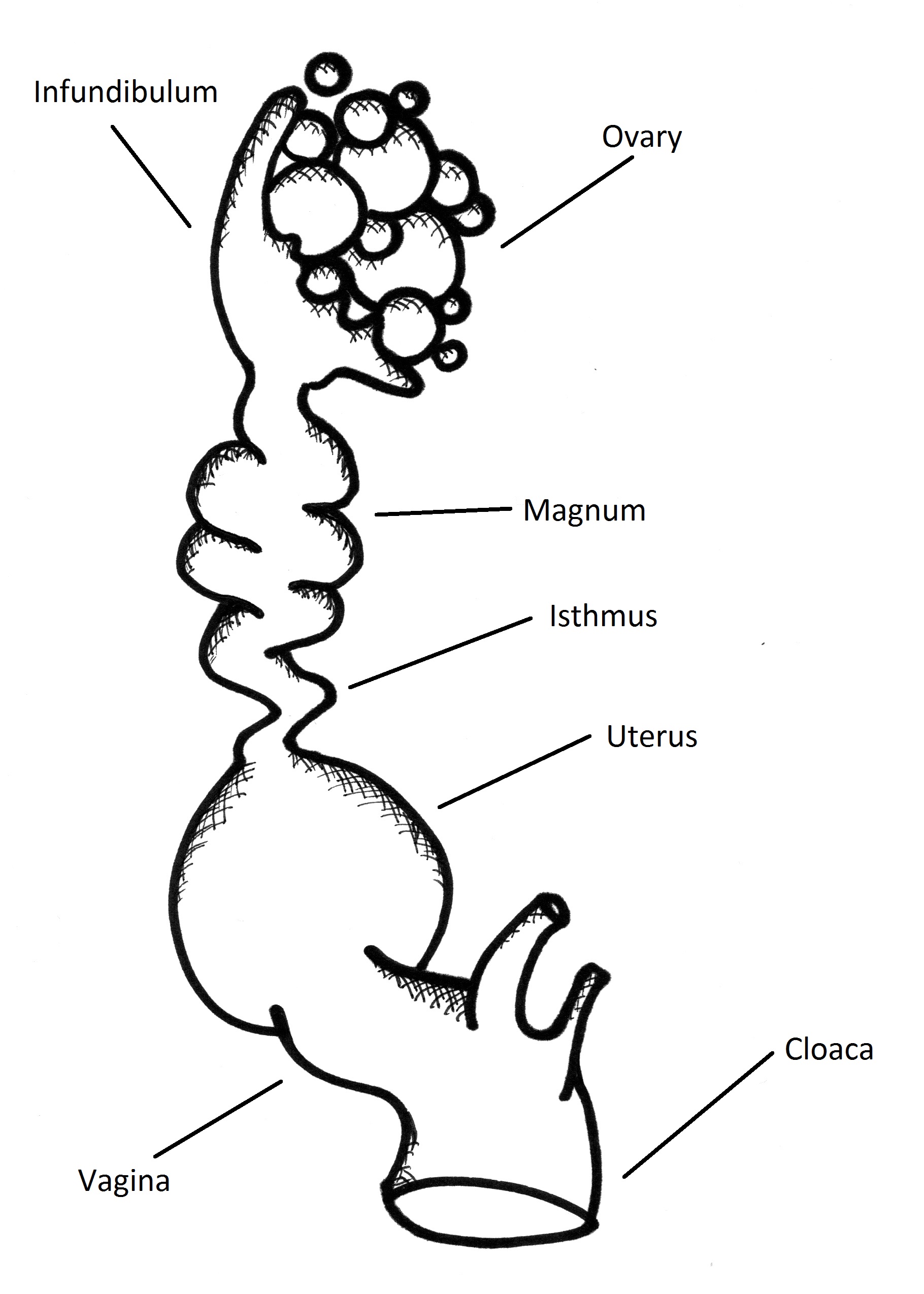Reproduction
Bubo
virginianus are oviparous, meaning they bear their young in
the form of eggs (Walters 1994). Before the female owls lay
their eggs, they must find their mate and select a location to
nest. About two months prior to mating, the owls find their mate
(Alderfer 2005, Robbins Jr. 1994). Like most birds, the males
attract the females (Kinstler 2009). The male advertises
themselves by a variety of calls; the most common call heard to
attract a partner is a short excited hoot (Elphick et al.
2001, Kinstler 2009, Robbins Jr. 1991). To download owl calls
and hear this call,
click here. Once the female has
selected her mate, it is common for the pair to remain partners
until one dies (Elphick et al. 2001). Next, the pair
must find a site for their nest. Bubo virginanus
usually do not make their own nests; instead they will choose a
natural or manmade cavity or take over old nests. For example,
great horned owls will take over an old red-tailed hawks nest
(Elphick et al. 2001, Robbins Jr. 1994). These nests
are typically found at mid canopy where cover is offered away
from other species (Rohner et al. 2000). After mates
are selected and nests are chosen, the female may lay her eggs;
this usually occurs between January and April (Alderfer 2005).
Actual reproduction of Bubo
virginianus begins within the females' reproductive system.
A male bird first fertilizes the egg; in the ovary the egg then
becomes a developing embryo. As the egg gets carried into the
magnum region, layers of yolk travel closely behind (Ritchison).
Yolk serves as a food source for the embryo; it is made of
lipids and proteins (Ritchison, Walters 1994). After an egg has
been laid, the yolk also rotates and helps keep the embryo in an
upright position (Walters 1994). After the embryo enters the
magnum, the egg is coated with a layer of albumen (Ritchison). The albumen layer is the clear part of an egg; it is made of
water and proteins that provide an extra coating of protection
(Walters 1994). Next, the egg passes through the isthmus and
gains a shell membrane (Ritchison). The egg continues in to the
uterus where the hard shell is applied making the spherical egg
shape specific to owls (Elphick et al. 2001,
Ritchison). The hard outer shell is made of calcium, which
provides protection for the embryo; it also includes an outer
cuticle providing further protection from bacteria. The outer
shell is also porous to allow for gas exchange (Walters 1994).
Lastly, the egg passes through the vagina and cloaca to be laid.
It is typical for great horned owls to lay 2-3 eggs per clutch
(Robbins Jr. 1991). For further detail on how the eggs are made
and general anatomy of birds, you can visit Professor
Ritchison's webpage
Avian Biology.
exchange (Walters 1994).
Lastly, the egg passes through the vagina and cloaca to be laid.
It is typical for great horned owls to lay 2-3 eggs per clutch
(Robbins Jr. 1991). For further detail on how the eggs are made
and general anatomy of birds, you can visit Professor
Ritchison's webpage
Avian Biology.
After an egg has been laid, it
must be incubated while it develops or it will not survive. Too
high of temperatures will kill the embryo, where low
temperatures will slow the development of the embryo and
potentially kill it. Mothers achieve keeping their young warm by
shedding feathers on their chest area and laying their exposed
skin on the eggs; this gives direct heat to the eggs (Ritchison,
Walters 1994). The female will incubate the eggs for about 35
days; the male will hunt and provide food for her during this
time (Elphick et al. 2001). After complete
development, the baby bird pecks creating cracks in the shell
until it can eventually pull itself out (Ritchison). For the
first couple weeks, the fledglings do no leave the nest; the
father hunts and provides food for the young (Elphick et al.
2001). After about three months of the fledging period, the
young owls are ready to leave the nest, but they cannot fly
until they are about ten weeks old (Alderfer 2005, Elphick
et al. 2001).
<<Adaptation Home Interactions>>
